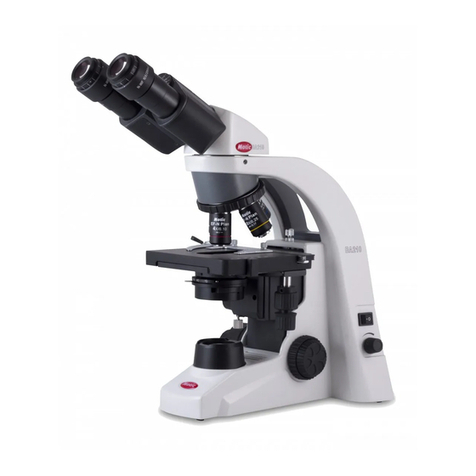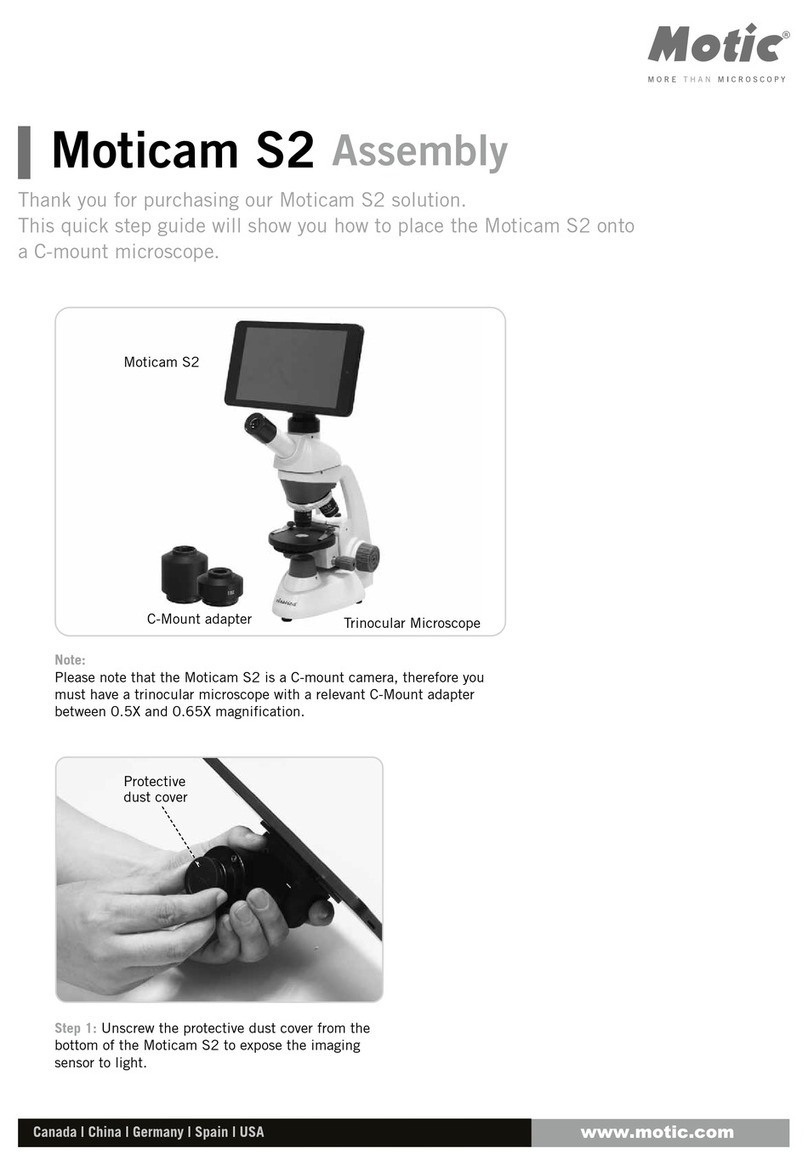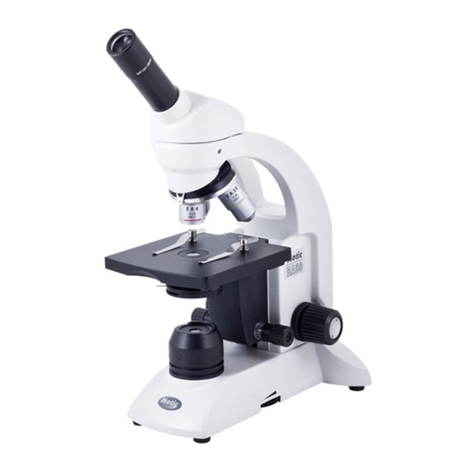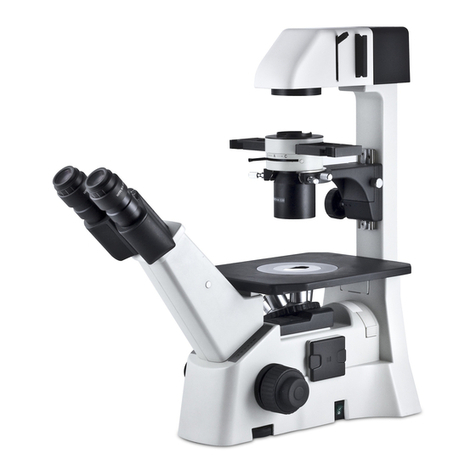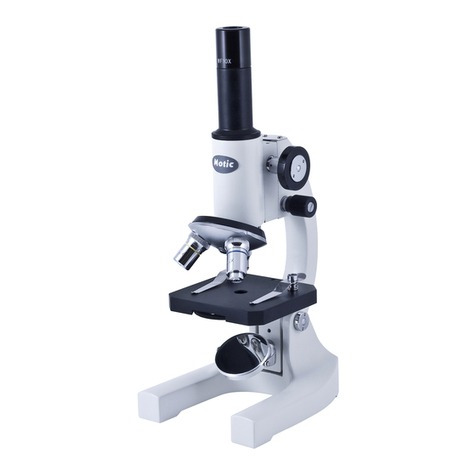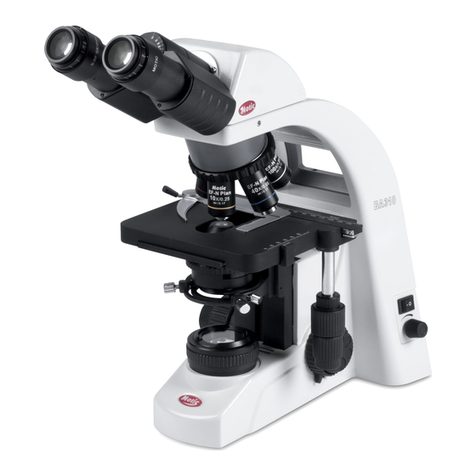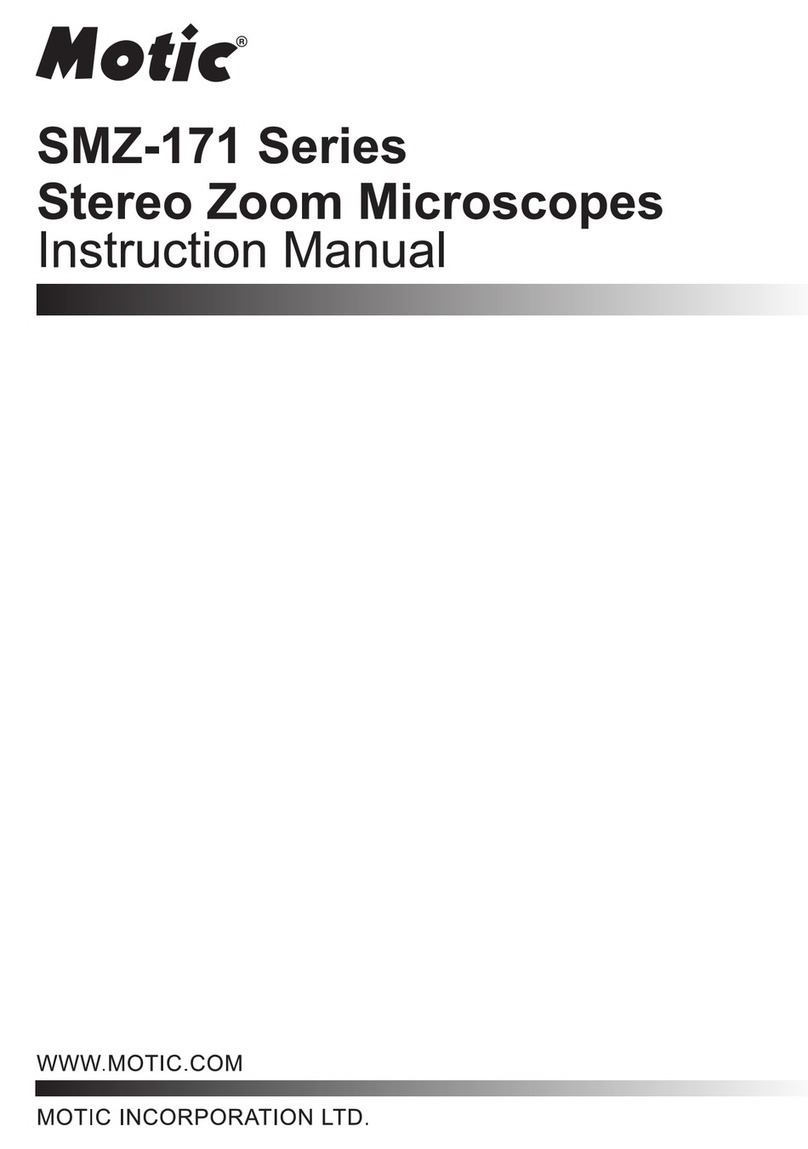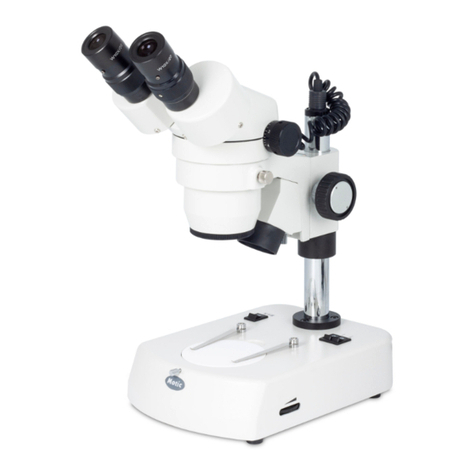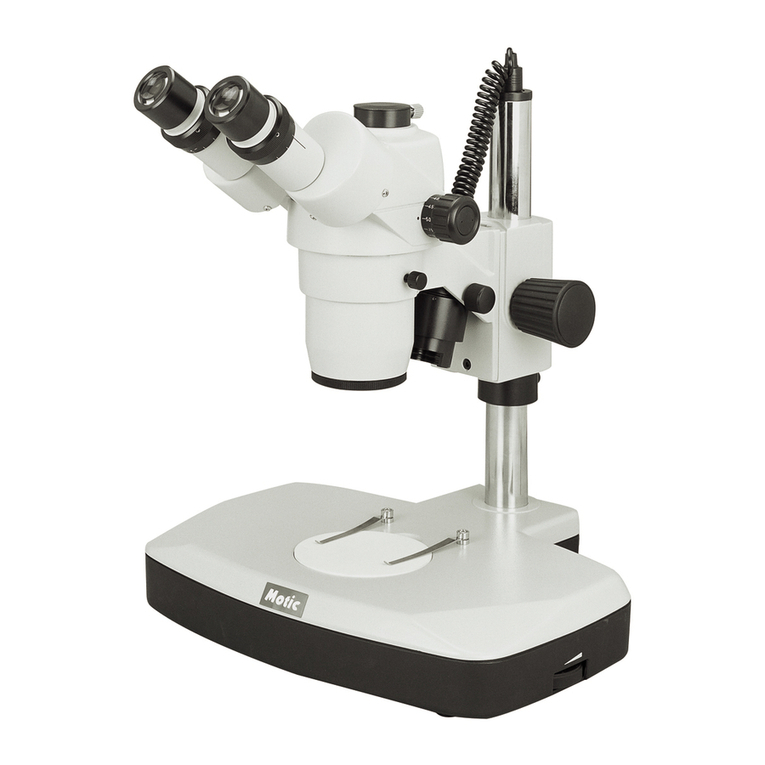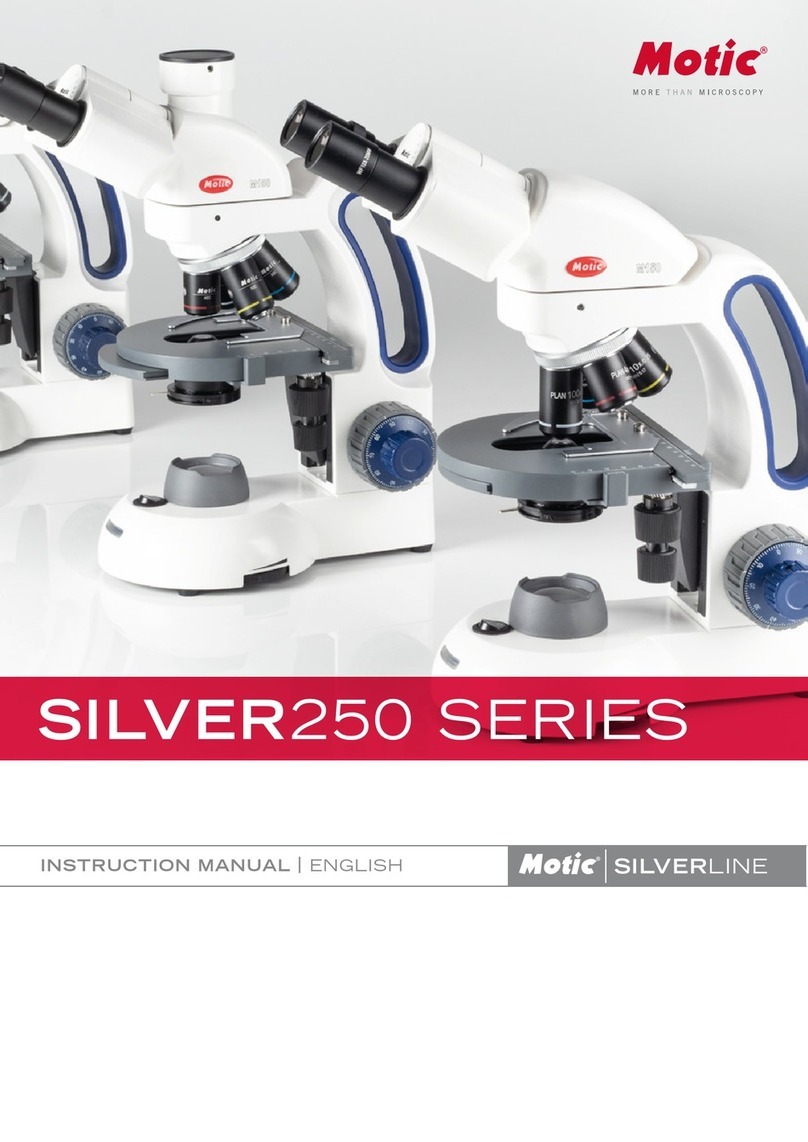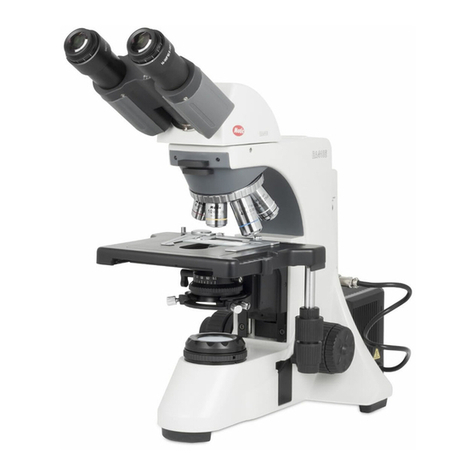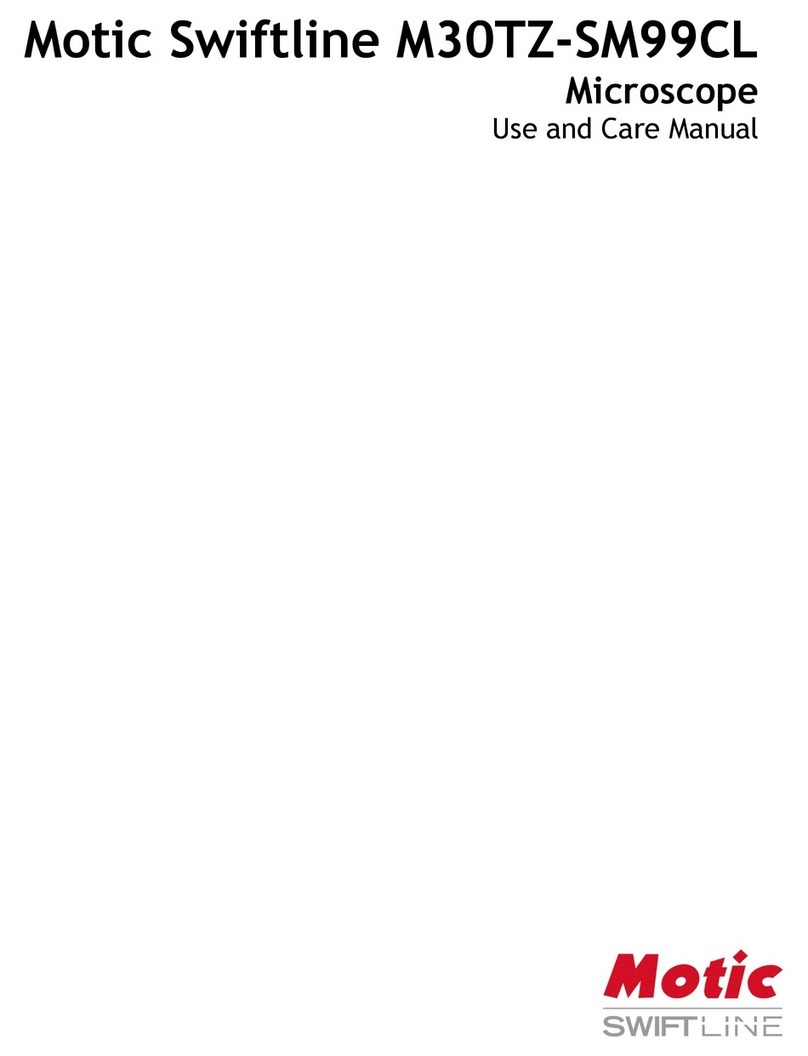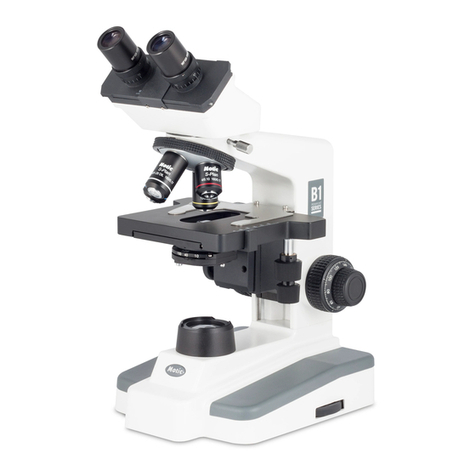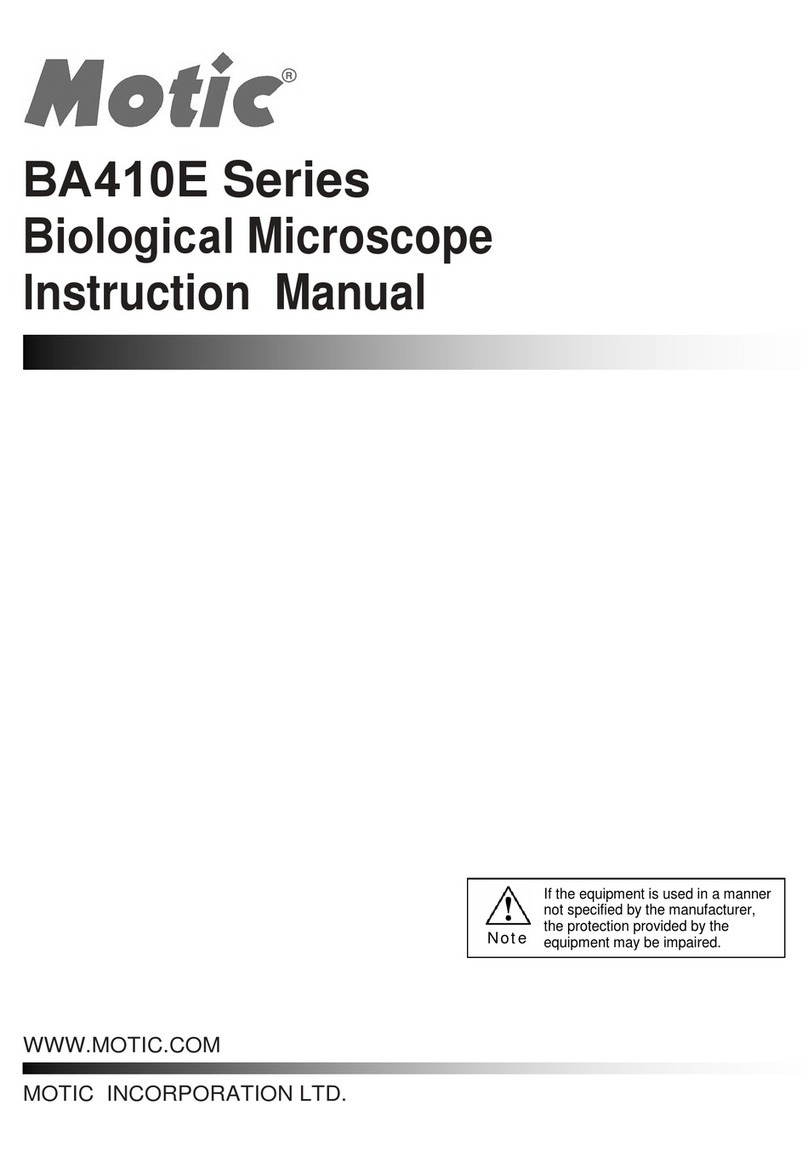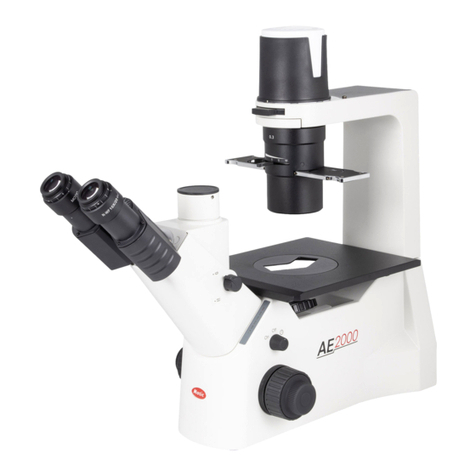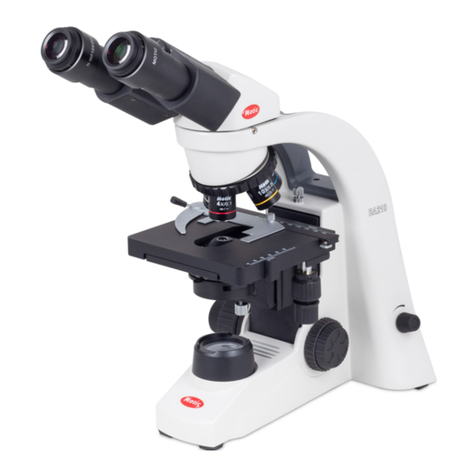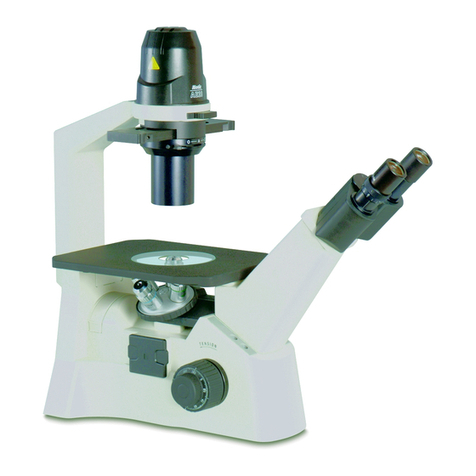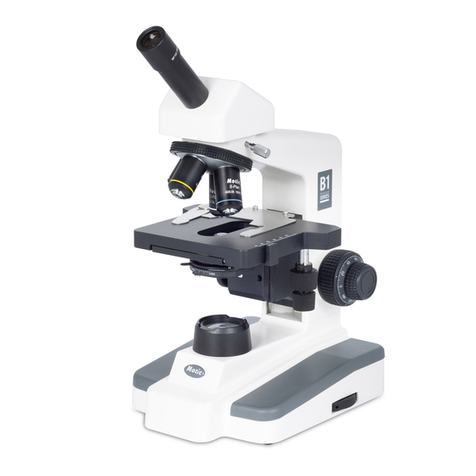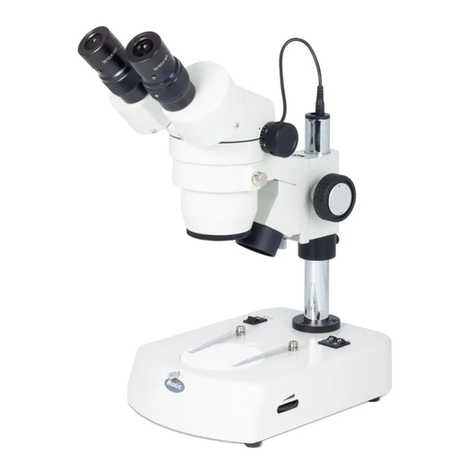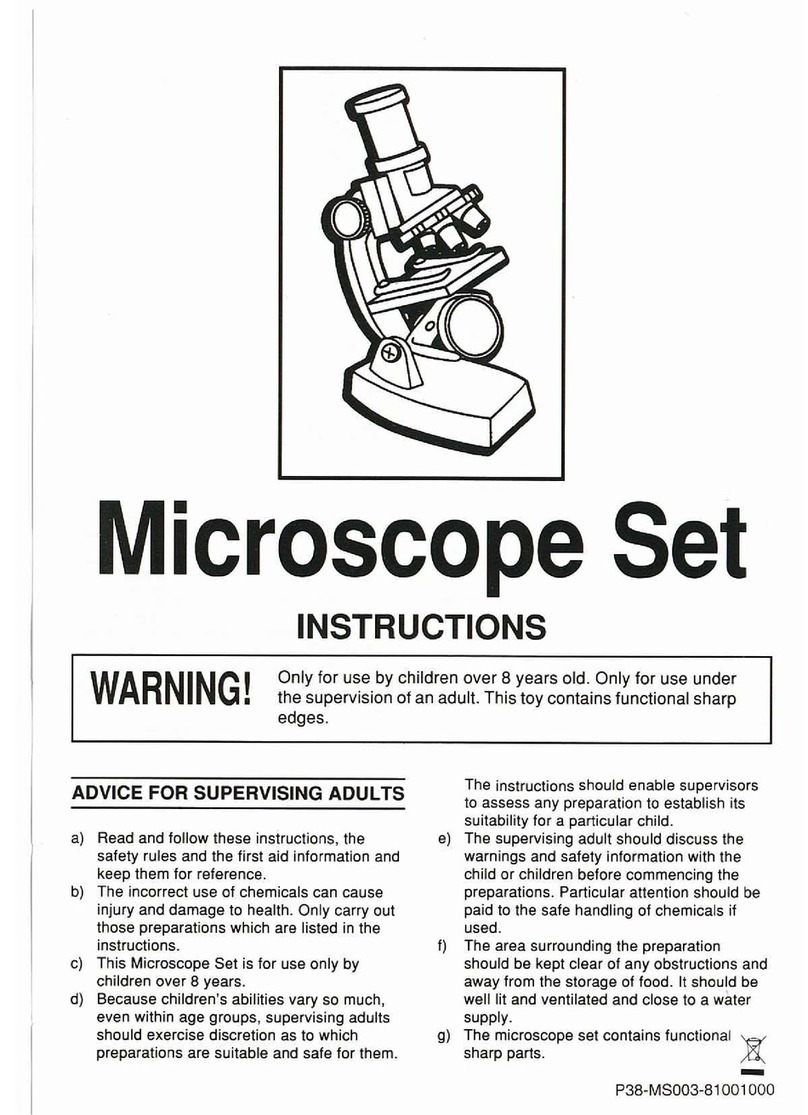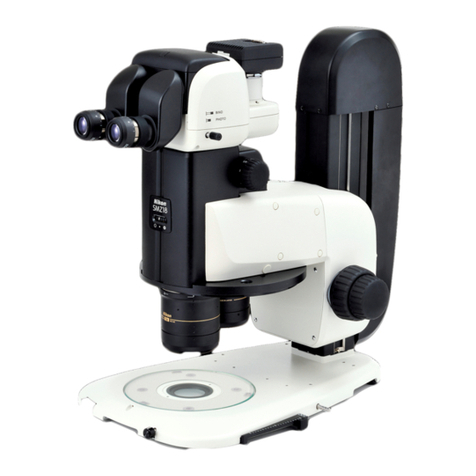
6
1.3 Transporting, unpacking, storage of the Instrument
Please observe and follow the safety notes for transportation, unpacking and storage
given in this document:
● The microscope is delivered as set, packed into commercial standard plastic and
cardboard packaging; Please re-use the original packaging only for any transportation.
● It is advised to keep and use the original packaging for longer storage or return to the
manufacturer to avoid losing the warranty.
● At receiving and unpacking the equipment, please verify that all parts specified on the
delivery note are present.
● Keep Transport and storage temperatures as specified in this Manual.
● Set the microscope up on a stable worktable with solid and smooth top surface suitable for
Instrument use.
● Do not touch optical surfaces.
1.4 Instrument Disposal
Please observe the following safety notes for the disposal of the microscope:
Defective Instruments, accessories and consumables should be disposed in compliance with
the provisions of the local law.
1.5 Use of the Instrument
The microscope Instrument as well its accessories must not be used for microscopic techniques or
purposes other than those described in this Operating Manual.
Please always observe the following safety notes when using the microscope:
Motic cannot assume any liability for other applications then the intended use, including the
included modules and components. This includes to service or repair work that is not carried
out by authorized Motic service personnel. In case of non-compliance, all warranty claims and
liabilities shall be forfeited.
The microscope Instrument should only be operated by trained personnel who are familiar with
this Operation Manual and therefore aware of the possible dangers involved.
